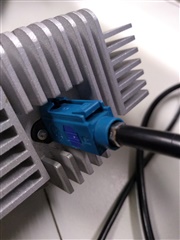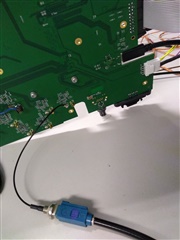Other Parts Discussed in Thread: ALP
Hi team, I am working with a carrier board (JETSON) that has an NVIDIA module mounted running a Linux operating system. An FPGA that acts as a switch is connected to it to give way to six TI-954 deserealizers. Together with these, six TI-953 serealizers work together, to which data from different video cameras arrives.
I have the problem that the arrival of frames is cut off randomly. That is why I want to generate these generators of pratons so that you are sure that there is no communication problem.
I use the example from the 954 datasheet for the pattern generator but cannot display it, getting a green screen which means there is no video data. I wanted to know how I can visualize this color bar through the Ubuntu console. What is the command that I can use to see it?




